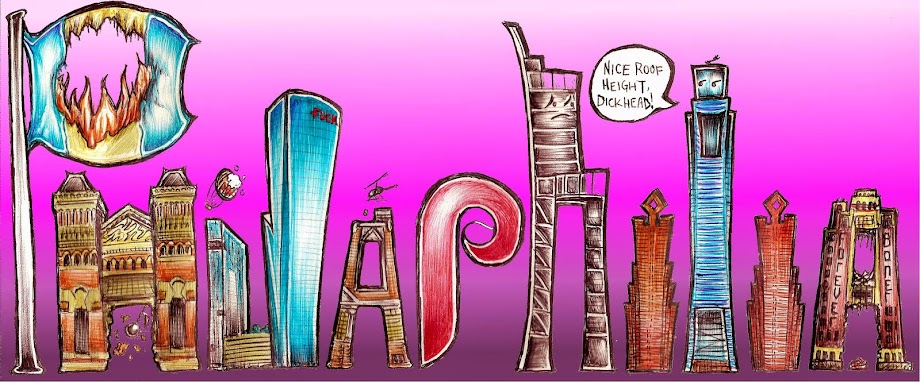 |
| How fucking cool was this thing? |
Charles Ellet was born and raised in Bucks County. He studied engineering in France (he was the first American to study engineering in Europe) and became obsessed with the then-futuristic idea of a large-scale suspension bridge (smaller suspension bridges were around back then but they sucked). When he finished school, he returned to America with the intention of getting a new-fangled large-scale suspension bridge built.
He first went to Washington, DC and proposed a suspension bridge over the Potomac. Back then that was like proposing a bridge to the International Space Station. He got laughed out of town. In 1841, however, Ellet was commissioned by the City of Philadelphia to design a 398-foot pedestrian bridge that would cross the Schuylkill River from the Water Works to Bridge Street in West Philly (now Spring Garden Street), replacing the beat-up old wooden bridge that was currently there (that bridge in itself has a cool history).
Ellet had a crazy idea. He would design a suspension bridge that was held up by high-tension wires. This would allow a much longer and wider bridge than other early suspension bridges, which were held up by chains. It would be able to hold much more weight, which would help the bridge stay useful for a longer time. Ellet was the top engineer in the nation.. he knew that much heavier vehicles would one day be built.
People were gonna flip their shit once they saw this thing. The Wire Bridge at Fairmount opened on January 1st, 1842 to massive fanfare and the first ever New Year's parade in Philadelphia, a city that likes its New Year's parades. The bridge became an instant landmark.
 |
| It was a big fucking deal at the time. |
Ellet was such a continuously-achieving 65th Level Badass that he ended up becoming a Civil War hero on top of all of his other accomplishments. He was commissioned by the Secretary of War (they didn't have pussy names like "Secretary of Defense back then, it was Secretary of WAR) to use his engineering prowess to convert common tugboats into war machines.
 |
| Ellet-Class Fuck You boat. |
 |
| U.S.S Ellet, DD-398. Do you have a Destroyer named after you? Didn't think so. |
 |
| The Fairmount Bridge in its final years. |
The only hope we have is an old Master Plan for the University of Pennsylvania from 2006. One of the renderings shows a cable-stay type suspension pedestrian bridge. If built, this would be the true successor to the Wire Bridge at Fairmount due to it's crossing of the same river and being in use for the same purpose (pedestrians). This plan is pretty much dead but if Penn had any balls they could make it happen. Do it, you fucks!
 |
| NOW! |

I thought the Wire Bridge was washed out in a flood? It was a common fate for 19th-century Schuylkill crossings.
ReplyDeleteBy the way, the Menai Bridge is a really badass early suspension bridge--possibly more badass than Robert Stephenson's nearby Britannia Bridge.
There is what looks like a bridge piling along the schuylkill trail, just north of the Vine St Overpass. Is this piling a remnant of the Wire Bridge?
ReplyDeleteI tried to find a picture, but google street view is the best I could do. Check it out: https://lh4.googleusercontent.com/-lF8ZTO99of4/Tl5Yqyue30I/AAAAAAAACT4/WaM4bI97ry8/Unknown-11.png
ReplyDeleteIf Penn had any balls, they would have put money and effort toward an even remotely memorable South Street Bridge, half of which traverses above and through their eastward-expanding campus. Instead, all they brought to the table was "hurry up and build it" and we ended up with the Streets Dept's glorified highway overpass whose commonsense amenities only came about by a major effort from concerned citizens bankrolled by a disgraced politician.
ReplyDeleteSo yeah, I hope Penn builds the suspension footbridge, but I have zero faith that they will.
The Ellet Bridge, however, kicked beaucoup ass.
steve-- It was demo'd. The only Spring Garden crossings that have washed away are the floating ones from the 18th Century.
ReplyDeleteAaron-- Not a piece of the Wire Bridge. The current spring garden street bridge follows the same exact path that the old bridges did. It's a bit of a mystery to me what that structure in the photo was used for... It does sit on the site of where the corner of a wide pier used to be (1858 Hex & Loch map). Maybe it used to hold up the pier?
Interesting, I never thought about it being part of a pier.
ReplyDeleteDefinitely sounds plausible: it's probably too small to support the full span across the river.